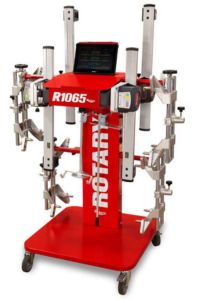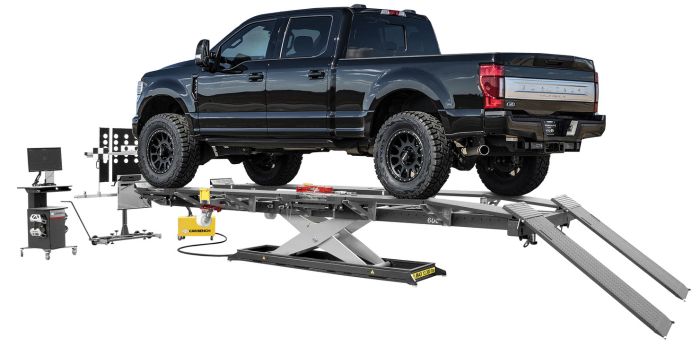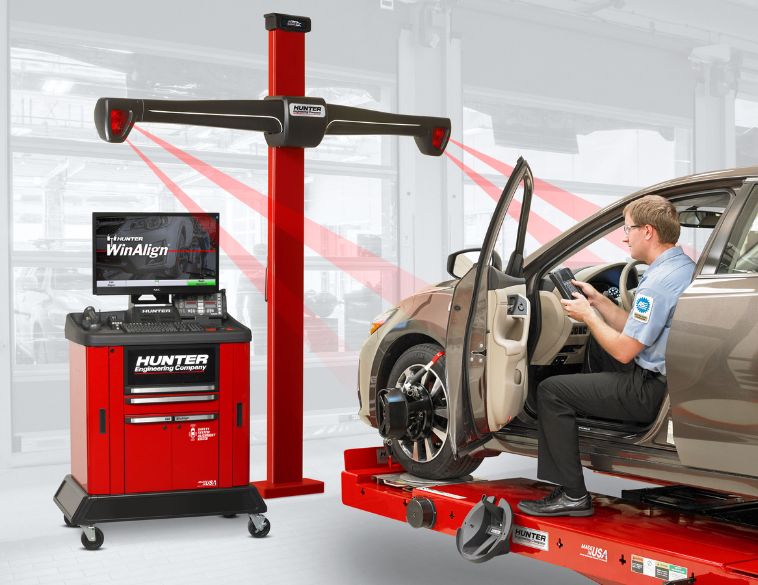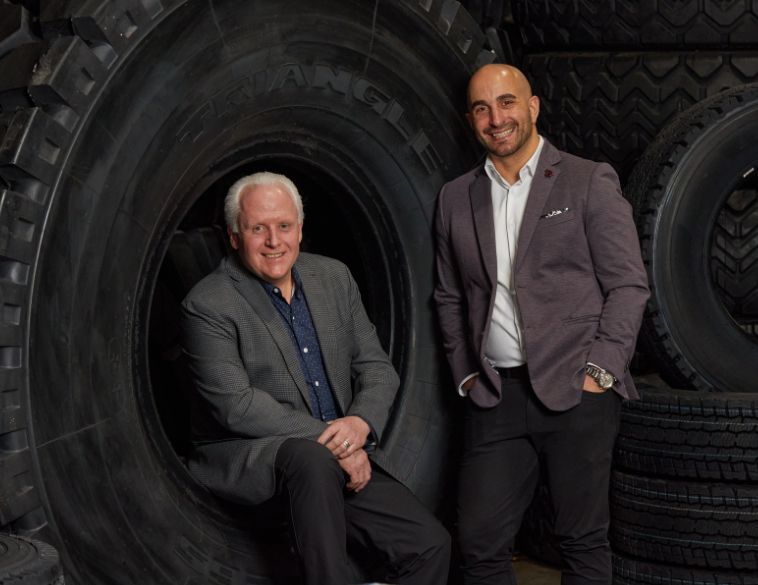Equipment for measuring and restoring the parallelism of vehicle wheels, commonly known as alignment, is constantly progressing towards greater sophistication and ease of operation.
Many tire and mechanical centres offer wheel alignment services to their customers. To do this, several technologies are offered by suppliers. In recent years, technologies have become more sophisticated and often include the important factor of advanced driver assistance systems (ADAS).
The tire and mechanical specialist knows the devastating impact that misalignment can have on tire wear. Increasingly, with the advancement of driver assistance technologies, wheel alignment is an essential element in the proper functioning of these systems, which protect the driver in the event of a lane departure, for example.
Several solutions

At the forefront of alignment technology, Hunter Engineering offers several solutions, including the HawkEye Elite system supported by WinAlign software. This equipment captures alignment measurements in 70 seconds and compares them to the manufacturer’s specification calibrations.
The installation of the adapters has been simplified and their tightening is without metal-to-metal contact, which protects the rims. The mobile device is designed to fit all types of workshops. It should also be noted that the Hunter HawkEye Elite allows for the printing of easy-to-understand reports that can be presented to the customer to see for themselves the need to adjust the wheel angle.
For Claude Joannette, representative for ISN Group Canada, a winning piece of equipment for tire centres is the Rotary R1065. “It’s a very interesting technology for workshops that can work directly on the floor or on a hydraulic lift,” he explains. “It’s an interesting device because it’s very adaptable to shops with limited space. I think it’s a good solution for shops that don’t yet offer the alignment service. The ability to offer wheel alignment in-house prevents the customer from going elsewhere.”
Informing the customer
A report can be sent electronically to the client after the parameters have been checked before the work begins. The R1065 mobile unit presents the alignment data in real time. This data is displayed on a digital tablet that the technician can take with him and follow the progress of the adjustments.
The fact that this unit is mobile means that it can be moved from one service bay to another.
The issue of alignment cannot be presented without addressing the issue of benches and lifts on which vehicles may be positioned during the operation. Here too, versatility is the order of the day.
The distributor Les Équipements et Services Filco has understood this need by recently adding to its catalogue the versatile platform The MEG developed by Car Bench. This four-in-one product can also be used for bodywork applications, but its usefulness for tire centres is undeniable.
One of the advantages of this bench is that it can be positioned so that the technician can work at a comfortable height. It has a lifting capacity of 6,000 kilograms. It is ideal for alignment, but also for calibration of ADAS systems. Clamping of the sensor heads with automatic centring prevents damage to the rims.
It offers the possibility to test the wheel alignment automatically with targets and immediate alignment values. Here too, a report can be produced with the justification photographs.
The platform levelling is based on unique alignment brackets, while four turntables integrated into the rails facilitate the positioning of the vehicle.

More security
All of this equipment allows tire centre managers to position themselves to meet customers’ expectations for a clear and accurate diagnosis of the alignment of their vehicles’ wheels.
Moreover, it is also an opening to learning about new driver assistance system technologies. As Hunter Engineering points out, more than millions of vehicles on the road today are powered by an electronic steering system. These systems, which determine the direction in which the vehicle is moving, must be calibrated before the vehicle is put back on the road.
Historically, wheel alignment was intended to extend the life of tires by preventing uneven or premature wear. Today, it is also linked to the proper functioning of the safety equipment that protects the motorist.



